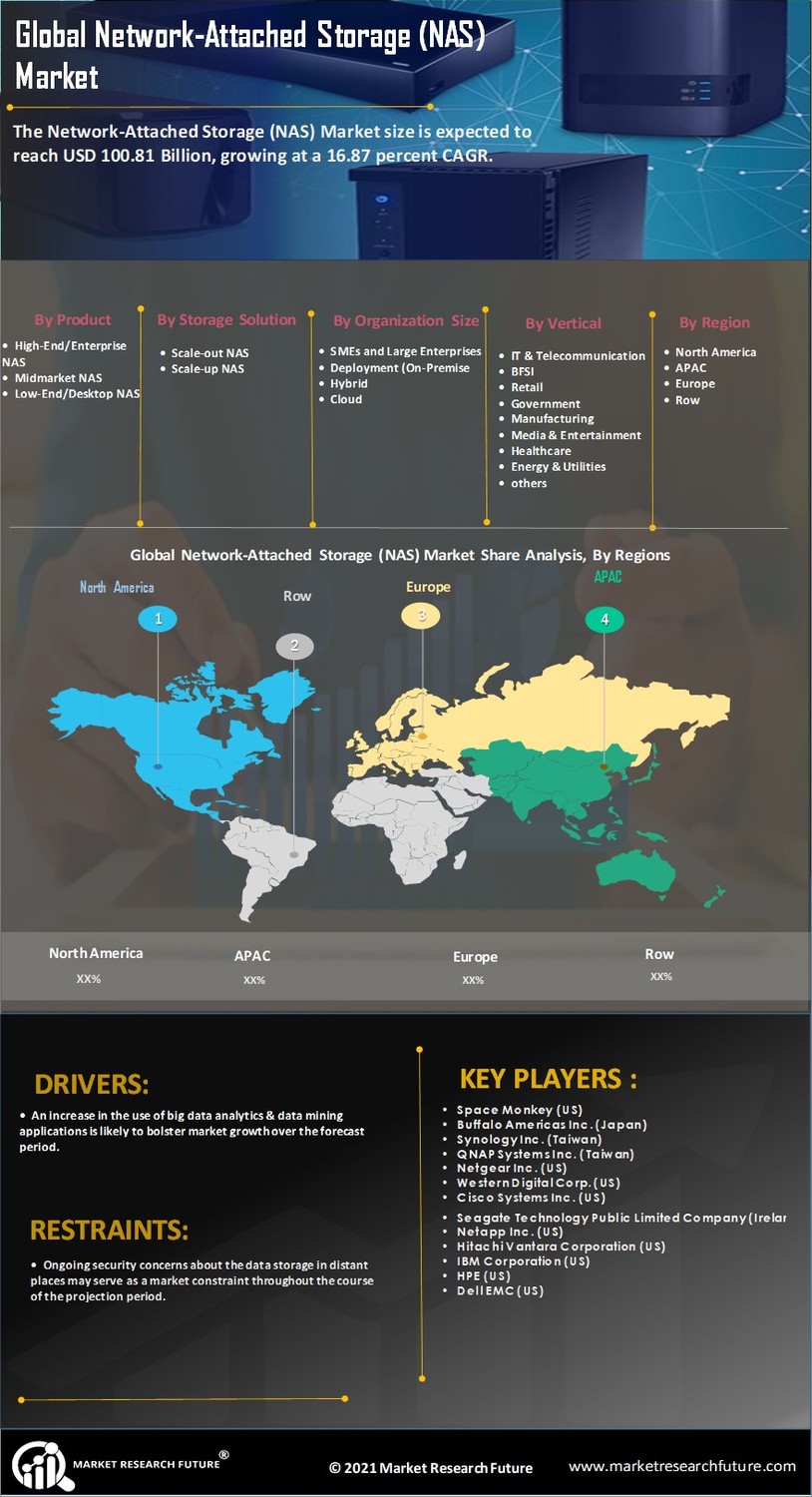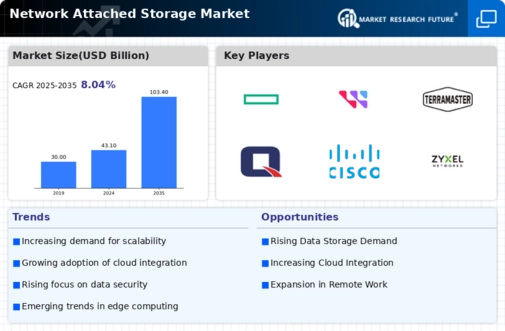Market Growth Projections
The Global Network Attached Storage Market Industry is poised for substantial growth, with projections indicating a market size of 43.1 USD Billion in 2024 and an anticipated increase to 103.4 USD Billion by 2035. This growth trajectory suggests a compound annual growth rate of 8.29% from 2025 to 2035, highlighting the increasing reliance on NAS solutions across various sectors. The demand for efficient data storage and management solutions continues to rise, driven by factors such as data proliferation and the need for enhanced security. As organizations seek to optimize their storage strategies, the NAS market is likely to expand, presenting opportunities for innovation and investment.
Rising Data Storage Needs
The Global Network Attached Storage Market Industry experiences a surge in demand driven by the exponential growth of data generation across various sectors. As organizations increasingly rely on digital solutions, the need for efficient data storage and management becomes paramount. In 2024, the market is projected to reach 43.1 USD Billion, reflecting the urgency for scalable storage solutions. This trend is particularly evident in sectors such as healthcare and finance, where data compliance and security are critical. The increasing reliance on cloud services further amplifies the demand for NAS systems, which provide a centralized storage solution that is both accessible and secure.
Cost-Effectiveness of NAS Solutions
The cost-effectiveness of Network Attached Storage solutions significantly contributes to the expansion of the Global Network Attached Storage Market Industry. Organizations are increasingly recognizing the financial advantages of NAS systems, which offer lower total cost of ownership compared to traditional storage methods. With the ability to consolidate storage needs and reduce hardware expenses, businesses can allocate resources more efficiently. This trend is particularly relevant for small to medium-sized enterprises that seek affordable yet reliable storage options. As the market evolves, the anticipated growth to 103.4 USD Billion by 2035 suggests that cost-effective solutions will continue to attract a diverse range of customers.
Increased Adoption of Cloud Services
The growing adoption of cloud services plays a pivotal role in shaping the Global Network Attached Storage Market Industry. As businesses transition to hybrid and multi-cloud environments, the integration of NAS systems becomes essential for seamless data management. NAS solutions facilitate easy access to data across various cloud platforms, enhancing collaboration and operational efficiency. This trend is underscored by the projected compound annual growth rate of 8.29% from 2025 to 2035, indicating a robust market trajectory. Organizations are increasingly leveraging NAS to bridge on-premises and cloud storage, ensuring data availability while optimizing costs and performance.
Enhanced Data Security and Compliance
Enhanced data security and compliance requirements are driving the growth of the Global Network Attached Storage Market Industry. With increasing regulations surrounding data protection, organizations are compelled to adopt storage solutions that ensure data integrity and security. NAS systems offer advanced security features, such as encryption and access controls, which are crucial for industries like finance and healthcare. As businesses prioritize compliance with regulations such as GDPR and HIPAA, the demand for secure storage solutions is likely to rise. This focus on security not only protects sensitive information but also fosters customer trust, further propelling market growth.
Technological Advancements in NAS Solutions
Technological advancements in Network Attached Storage solutions significantly influence the Global Network Attached Storage Market Industry. Innovations such as improved data transfer speeds, enhanced scalability, and integration with artificial intelligence are reshaping the landscape of NAS systems. These advancements enable organizations to manage larger volumes of data more efficiently, catering to the needs of data-intensive applications. As technology continues to evolve, the market is expected to adapt, with new features that enhance user experience and operational efficiency. The ongoing development of NAS technology suggests a promising future for the industry, attracting investments and driving growth.
















